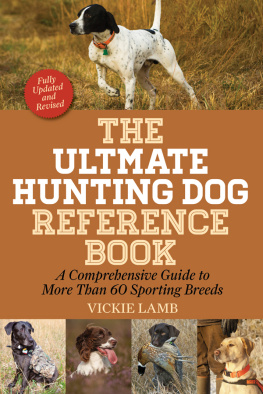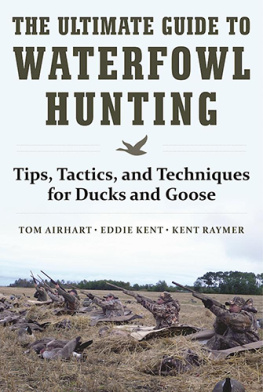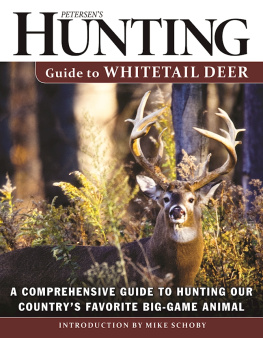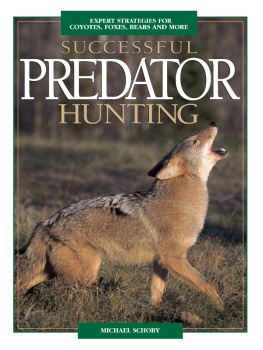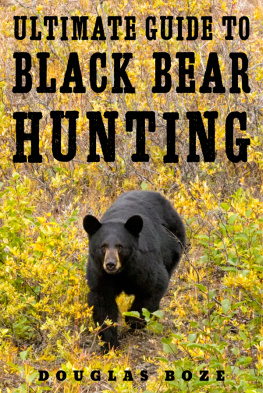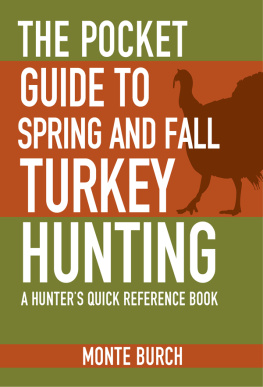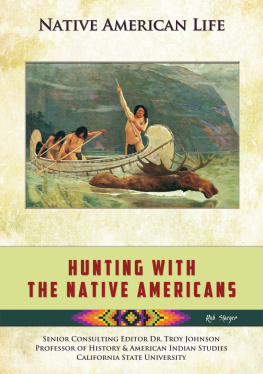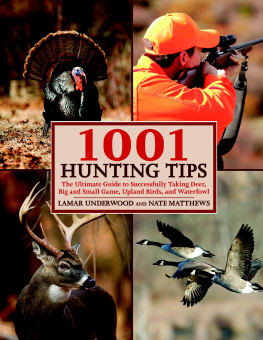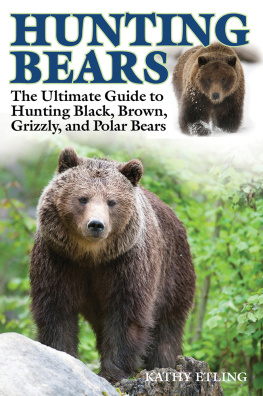Copyright 2007 by Vickie Lamb
First Skyhorse Publishing edition 2015
All rights reserved. No part of this book may be reproduced in any manner without the express written consent of the publisher, except in the case of brief excerpts in critical reviews or articles. All inquiries should be addressed to Skyhorse Publishing, 307 West 36th Street, 11th Floor, New York, NY 10018.
Skyhorse Publishing books may be purchased in bulk at special discounts for sales promotion, corporate gifts, fund-raising, or educational purposes. Special editions can also be created to specifications. For details, contact the Special Sales Department, Skyhorse Publishing, 307 West 36th Street, 11th Floor, New York, NY 10018 or .
Skyhorse and Skyhorse Publishing are registered trademarks of Skyhorse Publishing, Inc., a Delaware corporation.
Visit our website at www.skyhorsepublishing.com.
10 9 8 7 6 5 4 3 2 1
Library of Congress Cataloging-in-Publication Data is available on file.
Cover design by Richard Rossiter
Cover photographs credit: Thinkstock
Print ISBN: 978-1-63450-444-7
Ebook ISBN: 978-1-63450-462-1
Printed in the United States of America
Contents
Foreword
W henever you read something in a book or magazine, the author sounds just like youever noticed that? My favorite authors over the years have all sounded like me in my head when I read them. Sometimes Ill get tapes or CDs of a book Ive read and listen to the authors read in their own words and I think, Wow, I liked me better!
Its too bad things are this way, because I wish you could hear Vickie Lamb read her own words in her soft south Georgia accent, so full of patience and calm, moving at that steady, inexorable speed that accomplishes things, things like contract negotiations, explaining curfews to your teenager, and getting somebody to spill the beans in court. And training dogs.
Theres a short section in , Training Philosophy, titled Art of Speaking Canine. Vickie speaks canine. There are trainers who specialize in hounds, others in retrievers, and still others in pointing dogs. But ever since wolves moved to our side of the campfire, dogs have been dogs, regardless of the shapes theyve been twisted into and the talents theyve had instilled in them through selectiveand sometimes just plain luckybreeding. So a Walker is a Labrador is a shorthair is a Jack Russell. If you know how to speak canine, and Vickie does, you can train just about any dog to do just about anything a dog is capable of. And through all of this so far, I hope you have taken the time to admire my restraint in not using the term dog whisperer.
A few years back, I was putting together what the publisher hoped would be a comprehensive volume called Encyclopedia of North American Sporting Dogs. It covers all the hunting breeds, as the name implies, and I was restricted to using only about a half-dozen authors, and since encyclopedias have a way of being in print for a lot of years, I was very careful in the experts I selected. Vickie was one of them.
I have seen Vickies dogs work, I have seen the high regard in which shes held by her peerstrainers, trialers, and trial judgesand have been editing her copy at The Retriever Journal for going on a decade, and her depth of knowledge always pleases us at the magazines editorial office when its time to put an issue togetherher stuff just fits.
Ill tell you a dirty little secret of magazine publishing, if youre interested. When you have columnists and you also run full-length feature stories, you have to make sure that what you publish does not have redundancy in itthree columns and a feature on teaching Sit to a puppy is a little like overkill. So, a year ahead, we ask the columnists to send in their ideas for the upcoming year, and then we decide on the mix of those and then which features would complement the columns. Its a jigsaw puzzle, but a fun one to put together if you have good people, and we do.
But heres the secret: In a lot of magazines, a lot of columnists ran out of ideas years ago, and the ideas they end up writing about are fed to them by the editors. Weve never had to do that with Vickie; the well is deep, the rope is strong, and the bucket is large.
If you read and follow her advice in this book, youll end up with a trained dog, one that wants to please you, one that will hunt to your gun, one that will make you a fine companion at home, and one that will make you proud for years.
But unless youre a pretty little lady from south Georgia, you sure wont sound as good in your own head.
Steve Smith, Editor
The Retriever Journal
The Pointing Dog Journal
Traverse City, Michigan
Acknowledgments
W ithout a doubt, the success of a book of this nature requires the contributions of many folks. The exceptional photos are a testament to that fact, and my profuse thanks go out to all that contributed images.
I wish to thank Kim Kuhlman, Rossella Di Palma, Chip Laughton, Dennis Ingram, Claudio Cerutti, Brian Schmidt, Shannon Nardi, Sharon Potter, Pamela Kadlec, Eli Reichman, Lisa and Judd Street, and Vince Robinson for their help, which was over the top. Many thanks to Marilyn Fender, PhD., Ed Aycock, DVM, Rick Jackson, DVM, and Steve Smith. Also, I appreciated the help from various breed enthusiasts, as well hunters, from around the globe, including Oddur Magnusson, Pippa Mattinson, Eric Begbie, and Deb Wall.
Many thanks to my editors and everyone else who lent their expertise throughout the publishing process.
Thanks also to my parents, who have always supported my dreams; to my daughter, for loving the dogs as I do; and to the dog trainers, from whom I have learned throughout my life. Finally, I wish to thank the dogs; they have taught me most of all.
Introduction
S omething about the unique relationship between dogs and hunting has intrigued me for nearly as far back as I can remember. Of course, as a child I was precocious and curious, and as you find with many children, I was inexplicably drawn to animals. It seemed that anything with fur or feathers had a unique attraction for me, and I fancied that I might be able to talk to all creatures great and small, tame or wild. And I tried to do just that and was quite sure I succeeded any number of times, after all.
I tamed numerous wild creaturessort ofand patched up many injured ones over the years. I constantly wandered in the woods, often on my own, and got into more than my share of scrapes because of it, but I always managed to emerge none the worse for wear and, hopefully, a bit wiser. I was a student of animals in general and how they lived and communicated, but in particular I was drawn to horses and dogs and how they coexisted with each other and with humans.
And I read books. All those you might imagine for someone of my background, ones such as Old Yeller and Big Red and Where the Red Fern Grows , and others that might surprise you, such as Edgar M. Queenys Prairie Wings and authors including Burton Spiller, Havilah Babock, Nash Buckingham, Col. Harold P. Sheldon, Archibald Rutledge, and Gordon MacQuarrie.
At the same time I was learning about hunting, mostly by tagging along every chance I could with my dadmuch to the chagrin of my motherand also by listening to endless stories from my elders. I never tired of hearing the tales of wary ducks and wayward geese, of sneaking pheasant and exploding partridge, and of zigzagging rabbits, wily foxes, elusive bobcat, and raccoon and bear.
But the recurring theme as I grew up was that no matter if the game was feathered or furred, there was always a special dog attached to the equation, a canine hunting companion that gave more meaning to each experience. You see, my grandpa and my dad were always accompanied by dogs on these hunting excursions, and I grew up around those dogs and that kind of hunting.

